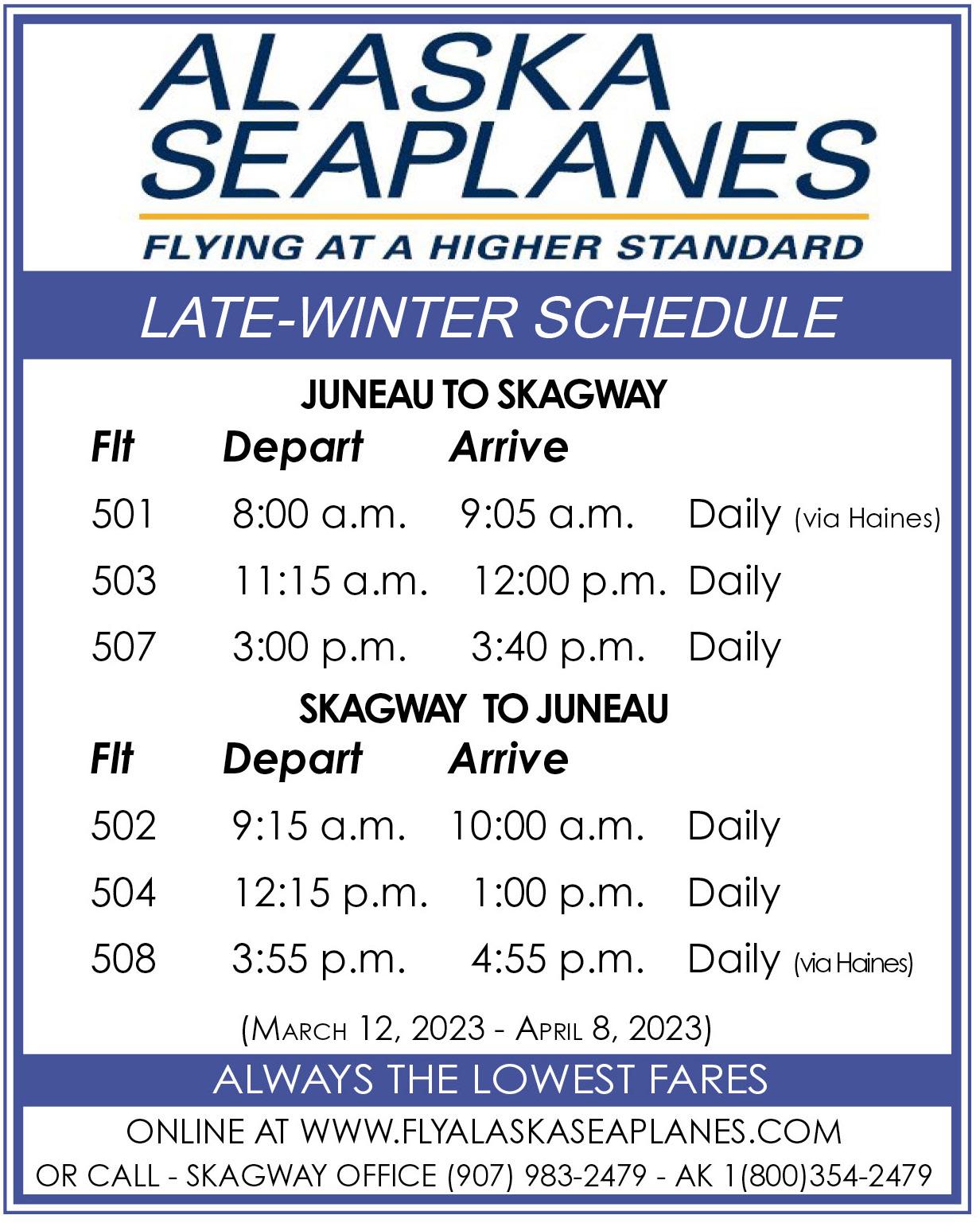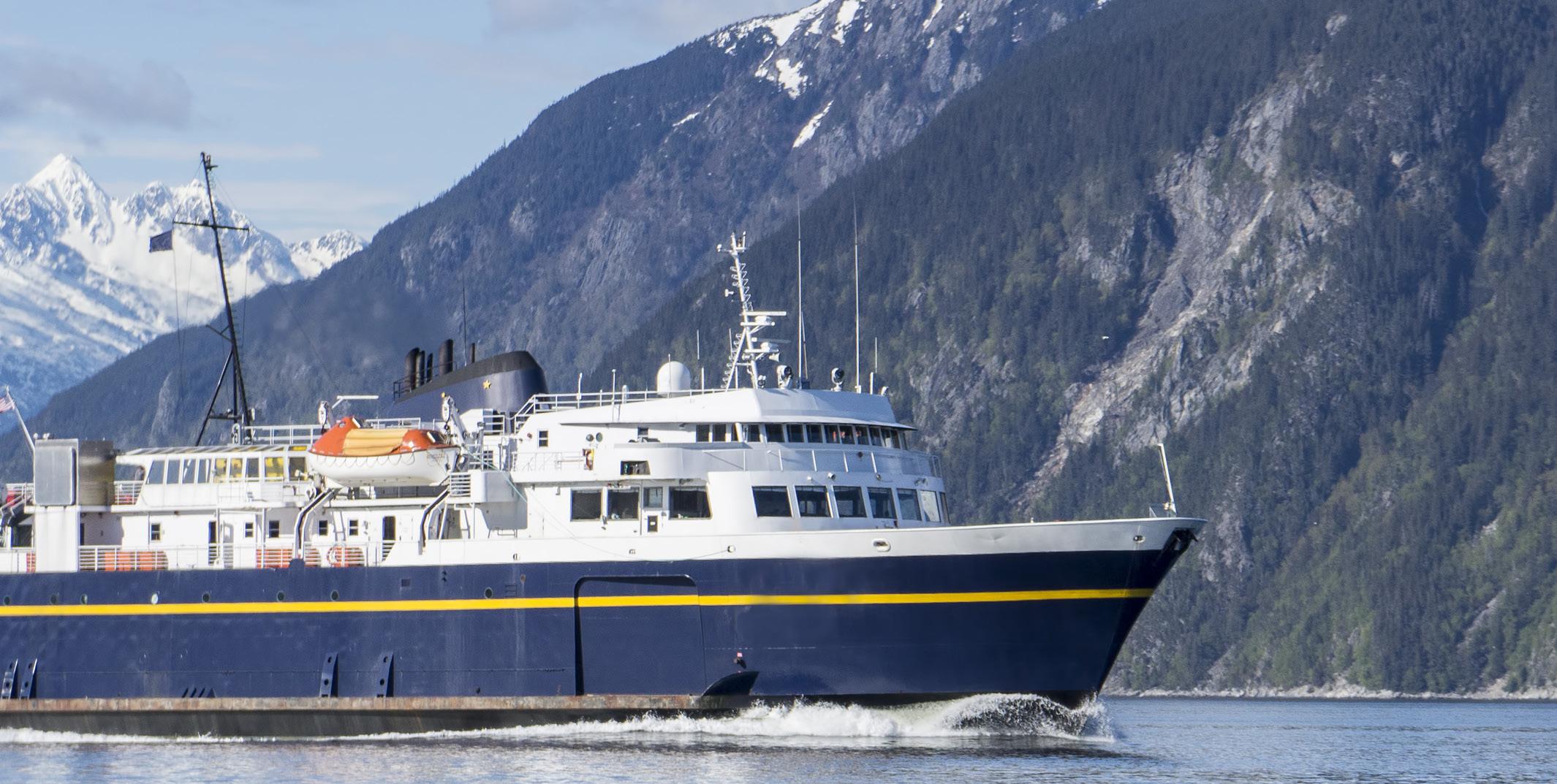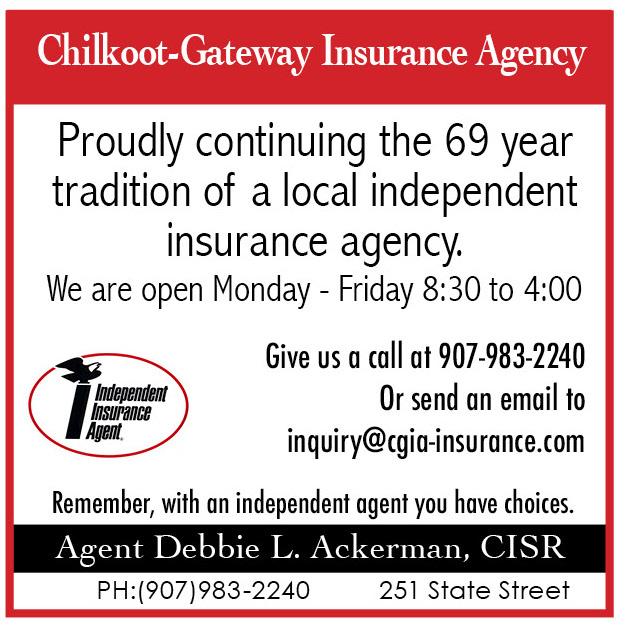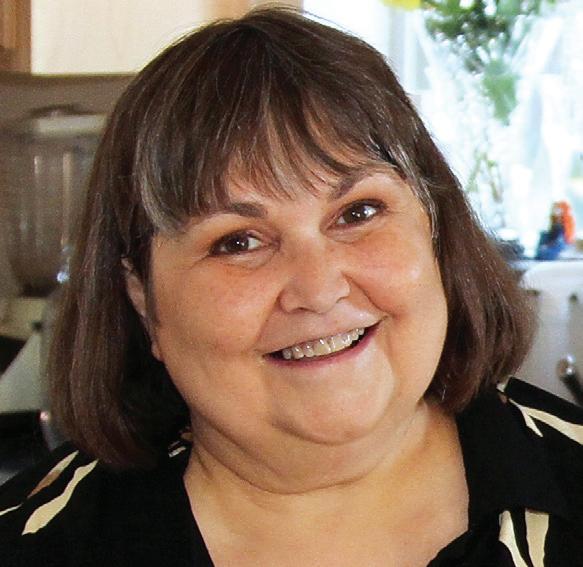
9 minute read
Ferry system management says state is working to fix hiring problems
By Larry Persily Wrangell Sentinel
The Alaska Marine Highway System is working faster to hire more crew, trying to fix problems that slowed the process so much the past four years that the state failed to keep up with retirements and resignations.
Advertisement
The hiring process was so cumbersome and excessively choosy that the state brought aboard just a few new workers out of 250 applicants forwarded by a search agency over the past year, according to a January report from the recruitment contractor.
“Since 2019, AMHS has lost more staff annually than recruitment efforts can replace. For every person hired, 1.8 people leave,” according to a Department of Transportation report prepared in January.
“The shortage of qualified crew members threatens the ability of AMHS to man the fleet. Being short-staffed, vessels are frequently at risk of going into layup and sail with a crew operating by extensive holdovers and significant overtime status, leading to low morale,” the report added.
The ferry system last month acknowledged that the Kennicott, the second-biggest active ship in the fleet, would be dropped from this summer’s schedule for lack of crew, jeopardizing service to Yakutat and Prince Rupert, British Columbia, and likely eliminating a couple of stops in Wrangell each month May through September.
Though the summer schedule was due out weeks ago, as of March 6 it had not been released, preventing travelers from booking tickets for the heavy-traffic season that starts in less than two months.
Ferry system officials have said they do not want to release the schedule until they are certain they can provide the service — which depends, in great part, on stretching available staff to cover as many sailings as possible.
In February 2022, the state hired an Anchorage-based contractor to help recruit and bring in job applicants for the ferries, offering the contractor $5,000 for every new employee. Of the pool of nearly 250 applicants gathered since then, the Alaska Marine Highway System hired just four, according to a report prepared by the contractor PeopleAK, which used to operate under the name Alaska Executive Search.

“While technical qualifications were a barrier for some applicants, AMHS is losing many potential employees due to a cumbersome application process and lack of timely communication once applications are initiated,” according to the PeopleAK report.
The reasons vary for why so few applicants were hired, but some of it can be blamed on the state, which was too quick to reject people for issues so picky as mistakes in their cover letter, Katherine Keith, deputy commissioner at the Department of Transportation, said in an interview last week.
Hiring personnel were too cautious and waited too long for everything to get finished, such as maritime credentials, before making job offers, she said.
In an effort to start fixing the problems, the state has cut out a couple of steps in the applicant review process, Keith said. In addition, the Department of Transportation has designated a staffer whose sole job is to oversee hiring.
Working through the stack of applications has produced some immediate results. Of the 250 past applicants, the department identified 60 who met job qualifications and 12 were hired as of Feb. 24, with more job offer letters going out soon, Keith said.
The marine highway is budgeted for more than 600 onboard crew positions.
In another move to bring on new employees faster, the state is making “conditional hires,” Keith explained, getting crew into onboard training while waiting for Coast Guard licensing and other credentials.
That training could occur either on vessels while underway or aboard the Matanuska, which is tied up in Ketchikan while the state decides what to do about millions of dollars of steel repairs needed on the
60-year-old ship.
The state also is making it easier for new hires to earn a $5,000 recruitment bonus. Instead of requiring that they stay on the job 18 months, new hires can keep the bonus after six months on the job, Keith said.
In addition to the hiring report by PeopleAK, the ferry system last month received several reports from other consultants focused on management, operations, financial durability and fleet maintenance.
“The whole organization is inert, toxic and bureaucratic,” said a report titled “Operational Resiliency and Efficiency,” prepared by a team of contractors from Alaska and Seattle.
“While AMHS’ values are right, its structures are wrong. Too much of it still has the feel of the 1960s, ’70s, and ‘80s, both for those working for it and those using it. Shoreside administrative management are run off their feet. Capacity problems lead to shortages of staff, especially sea staff and management services that are slow and unresponsive.”

The report also addresses the loss of passenger traffic: “Customers are disempowered, with little choice but to use other modes of transportation, notably by air using the very efficient Alaska Airlines, private floatplanes, private ferry services and barge services (for transportation of vehicles).”
Southeast ferry passenger counts have fallen by about 60% since 1992, with state budget cuts imposed in 2019 adding to the decline in service and leading to the most crew resignations in a single year.
“The system has been un- der a lot of stress for years,” Keith said. “We’ve taken that extremely seriously,” she said of the consultants’ reports.
An evaluation prepared for the state by Seattle-based Elliott Bay Design Group identified other problems:
“AMHS department managers and ship captains do not have annual budgets to operate within. They therefore must apply for and justify even relatively small expenses, even if it is an ongoing one such as toilet paper.
“Communications through- out AMHS appear to be poor quality, untimely and often never occur at all.

“Current staffing level of AMHS do not have the skills, knowledge and capacity to adequately perform the required functions necessary to maintain compliance with the proposed additional federal awards.”
Congress last year approved grant funds that will direct almost $300 million to the ferry system for operations, repairs and new vessels.
By Gretchen Wehmhoff
March is Women’s History Month and we, Melinda and I, write history. That’s the major afterproduct of a newspaper – the place for research about what happened in a town, nation or country. Newspapers record history.
We are also part of history as women owners of a media outlet in Alaska. We aren’t the first. Take a quick look around the state to Anchorage Daily News, The Nome Nugget, The Petersburg Pilot, The Sitka Sentinel, The Wrangell Sentinel and more. All have been, or are currently owned, partially or in full, by women. Historically it has been the newspaper business that opened the door for dynamic and driven female journalists like Nellie Bly, Helen Thomas, Connie Chung and Barbara Walters – only a few of many women who pushed the limits while writing the truth.
According to studies by WalletHub, Alaska has the highest share of women-owned businesses in the United States at 24.71 percent. Great – we are ahead at being behind.
Women make up about 50% of the population of the planet, and the U.S., yet only 27% of legislators in the U.S. are women and only 25% hold board seats with Fortune 500 companies. In fact, the U.S. ranks 27th in the World Economic Forum study of gender equality in 146 countries. We improved from 30th the year before.
Skagway is represented by a vocal and successful group of women owned and run businesses. Just drop into the Skagway Biz messenger group and you will meet most of them.
The other day I watched an NBC news story about
Child Find: April 27, 2023
a woman who fell in love with her 1974 Volkswagen. She was the second girl to take auto mechanics in her school, and after enduring work in the field where she felt she always had to prove herself, and knowing she was always being watched to see when she would fail, she started her own business where she taught and engaged women in the love of cars – Bogi Lateiner’s Girl Gang Garage

Yes, it happens. Whether subconsciously or overtly, generations of women have had to endure, ignore or push back on the critics.
When I coached squirt hockey in the 80s, I decided to take the first level coaching course from USAHockey. I was the only woman in the class of about 30 fathers, uncles and other coaches just looking to learn more about coaching kids. The instructor was another story. While I was irritated, I pushed back at times – like the time he referred to me as Sweetpea.
“My name is Gretchen.”
Skagway School District is scheduling appointments for our birth to five year old annual early development screening April 27, 2023. This screening will be conducted by a collection of specialists at the school. We will be screening for vision, hearing, developmental delays, speech/language impairments, and more.
You do not need to have any concerns to bring your child in to participate, we will also do general developmental surveys to track milestones. Our goal is to have all Skagway children birth to five years old participate!
The purpose is to locate children with potential disabilities so that a free and appropriate public education can be made available. The types of disabilities that, if found, cause a child to need services are:
• Cognitive Disability
• Speech or Language Impairment
• Emotional Disturbance
• Autism Spectrum Disorder
• Other Health Impairment
• Deaf-Blindness
What is Child Find?
• Hearing Impairment, Including Deafness
• Visual Impairment, Including Blindness
• Orthopedic Impairment
• Traumatic Brain Injury
• Specific Learning Disability
• Multiple Disabilities
Child Find refers to activities undertaken by a public education agency (Skagway School District), to identify, locate, and evaluate children between the ages of birth to twenty-one residing within the school’s geographic boundaries who are suspected of having disabilities, regardless of the severity of their disability, and determine the child’s need for special education and related services.
If you suspect your child has a disability, you know of a child who you suspect may have a disability, or you have questions about special education for children with disabilities, please contact Cody Burnham at Skagway School by calling (907)983-2960 or email cburnham@skagwayschool.org to schedule an appointment.

“I know, Sweetpea, but I need to move this box.”
“My name is Gretchen.”
At this point, the man who was assisting him backed away with hands up, a motion that said, “Hey, it’s not me.”
The trainer also had trouble figuring out how to address the group with a woman present.
“Okay men (guys, boys – insert the common words here) and lady.”
I was irritated, and actually surprised, that the materials we were given followed the same path. All the cartoon-like illustrations show “Dad” helping the coach in the box and “Mom” bringing the cookies.
I understood what Bogi meant about being watched. The first day of training was in the classroom. The second day was on the ice. I didn’t think about it as I stepped on the ice, but I saw it when I turned towards the instructor for directions.
Most of the men were parents who wanted to be involved in their kids’ lives. Some of the men had young daughters who wanted to play. Many were new to skating. There was no judgment from my classmates, rather, I saw several of them look uncomfortable when the instructor drew attention to me.
I could skate. I put on skates when I was seven and practiced on the rink my dad made in our backyard. I started playing hockey in the first year of women’s hockey in Anchorage. Getting on the ice and passing the puck was not a worry for me, but I felt the eyes. Mostly curious, but I felt them watching.
I do see hope.
When my granddaughter was 8 or 9, she was surfing through cable channels. She stopped on Ironman, then groaned and changed the channel.
“Why are women always being rescued? Why can’t they do the rescuing in movies?” she said.
As streaming brings back decades of television, we can see that trend of women in the films and television.
I used to show the movie “All the President’s Men” to my journalism classes until I looked at it from a different angle. Have you ever wondered why the only mention of Katherine Graham, the owner of the Washington Post at the time, was in one line that mentioned “getting her panties in a bunch?” Have you watched the interactions with the women in the film? I stopped showing it and dropped it from my tool bag.
In the past decade we are seeing what we missed. I think one of the greatest movies that speaks to “herstory” is in the film, “Hidden Figures” where a group of Black female mathematicians check and calculate the numbers used by NASA in their space program. Their employment survival depended on their ability to work together and learn new technology to engage with computer programming. We didn’t know much about these strong, intelligent, capable and dedicated women – because they were kept in a separate place and treated – well “badly” is the work I can print. These women endured. They chose their battles and pushed forward. They made way for their children and grandchildren.
If you look on page 12 of this issue, you’ll read about young women in Skagway who are succeeding. Adalia Deach is looking at five digit scholarships - more than $90,000 to pursue her talents. Callia Fielding has become synonymous with powerful orations. Tessa Murphy and Fielding will be headed to nationals with a refreshing interpretation of “The Princess Saves Herself in This One.”
Mina Lee literally climbed mountains to raise funds for those in need, then found a corner in the historic part of town to fill with music. Beautiful, skilled and “listen to me” music.
Women have now become the majority of students enrolled in colleges and universities. Several young women from Skagway and other parts of the country are earning scholarships, entering military academies, going into space and standing up.
Girls who participate in the local robotics program










